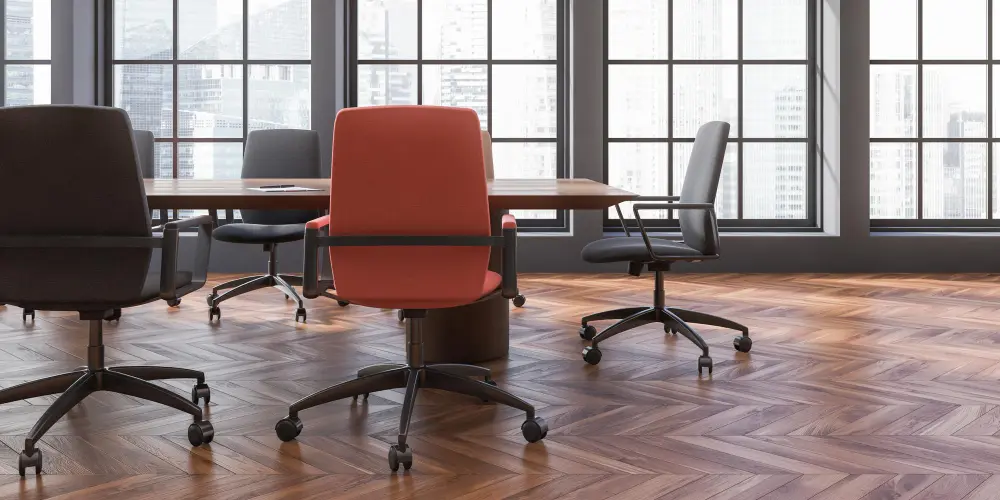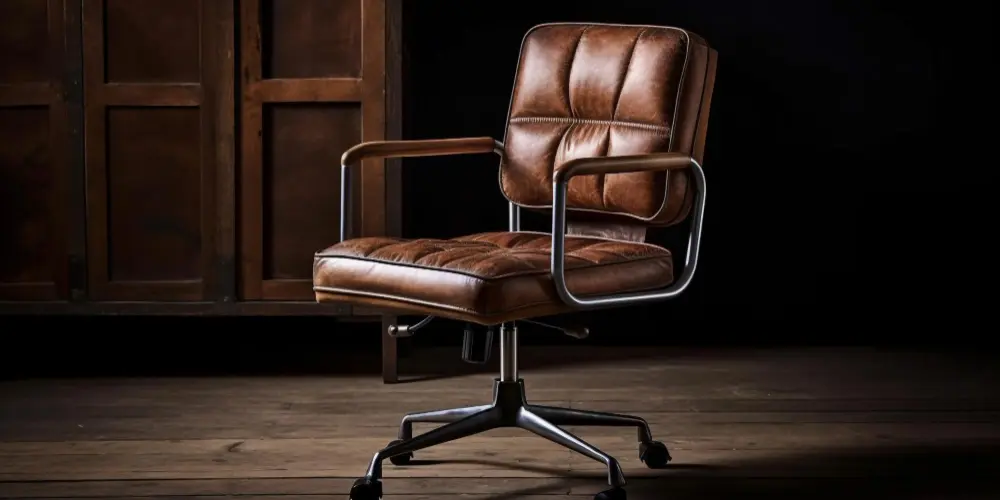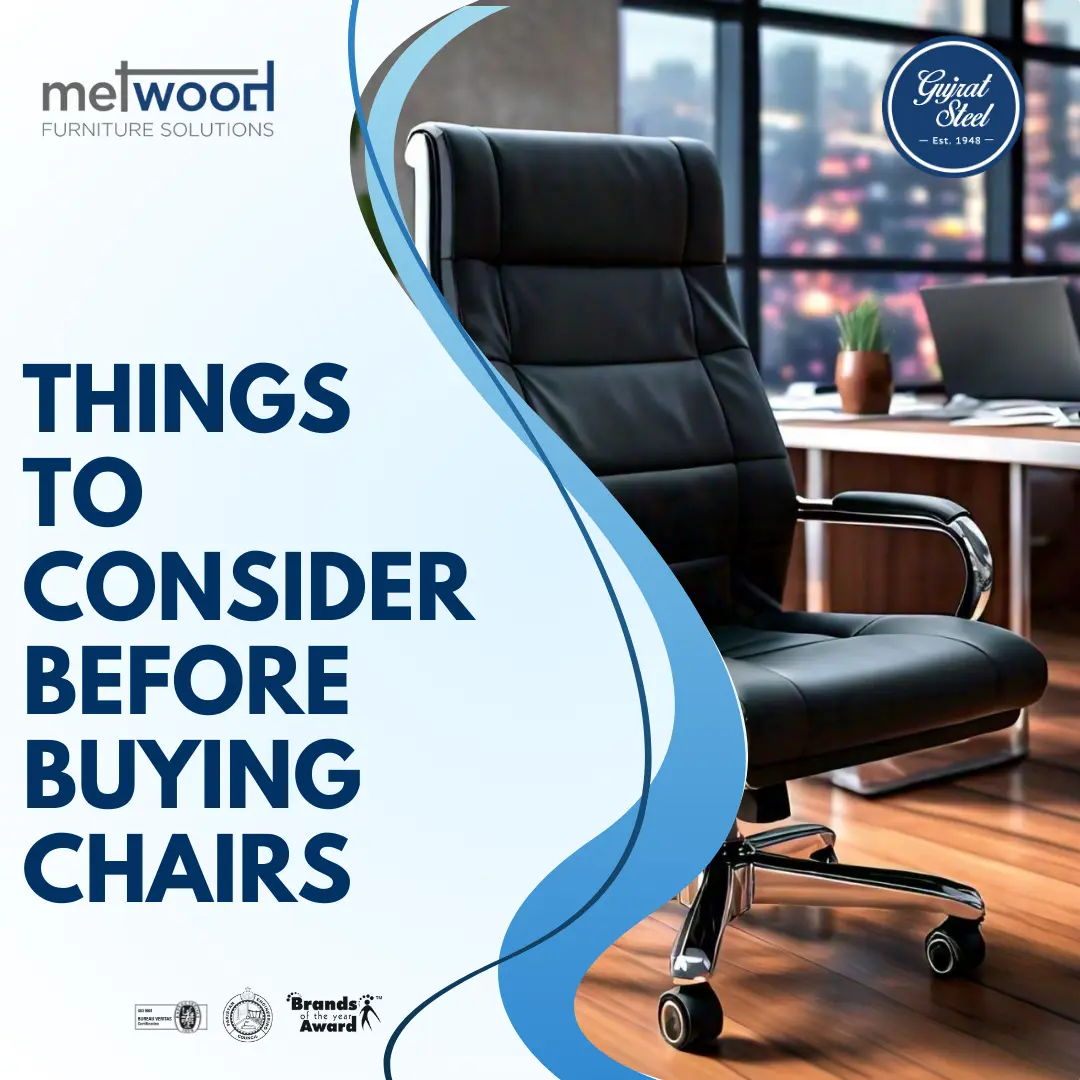In the modern workspace, the office chair reigns supreme as an essential tool for productivity, comfort, and overall well-being. Whether you’re setting up a home office or outfitting a corporate environment, selecting the right office chair is paramount to ensure ergonomic support, enhanced productivity, and long-term satisfaction. But with a myriad of options available, ranging from basic task chairs to high-tech ergonomic wonders, how do you choose the perfect chair?
In this comprehensive guide, we’ll delve into the crucial factors to consider before purchasing office chairs, ensuring that you make an informed decision that aligns with your needs and preferences.

01. Ergonomic Design:
Ergonomics should be the foremost consideration when selecting an office chair. Look for chairs that promote proper posture by providing adequate lumbar support to maintain the natural curvature of the spine. Adjustable features such as seat height, armrests, and recline tension allow for customization to fit your body size and work style. Ergonomic chairs reduce the risk of musculoskeletal issues such as back pain and neck strain, promoting comfort and productivity during long hours of sitting.
02. Comfort and Support:
Comfort is key when it comes to office chairs, as you’ll likely be spending a significant amount of time seated throughout the workday. Look for chairs with cushioned seats and breathable upholstery materials to provide ample padding and airflow for maximum comfort. Additionally, consider chairs with contoured seat pans and waterfall edges to alleviate pressure on the thighs and promote healthy circulation. Test out chairs in person whenever possible to ensure that they provide adequate support and comfort for extended use.
03. Adjustability:
The ability to customize your office chair to fit your unique needs and preferences is essential for optimal comfort and support. Look for chairs with a wide range of adjustable features, including seat height, armrest height and width, backrest angle, and lumbar support depth. These adjustable settings allow you to fine-tune your seating position to alleviate strain on your body and promote comfort throughout the workday. Investing in a chair with ample adjustability ensures that you can adapt to changing tasks and activities without sacrificing comfort or productivity.
04. Durability and Quality Construction:
Office chairs are a long-term investment in your comfort and productivity, and it’s essential to choose chairs that are built to last. Look for chairs constructed from high-quality materials such as steel or aluminum frames, reinforced plastics, and durable upholstery fabrics. Chairs with sturdy construction and robust mechanisms are more likely to withstand the rigors of daily use and provide reliable support for years to come. Additionally, consider chairs from reputable manufacturers with a track record of producing high-quality, durable products backed by warranties for added peace of mind.
05. Style and Aesthetics:
While comfort and ergonomics are paramount, aesthetics also play a significant role in office chair selection, especially in design-conscious environments. Consider the overall aesthetic of your workspace and choose chairs that complement the existing decor while reflecting your personal style preferences. Whether you prefer sleek modern designs, classic executive aesthetics, or minimalist chic, there’s an office chair to suit every taste and workspace ambiance.

06. Budget and Value:
Office chairs come in a wide range of price points, from budget-friendly options to high-end ergonomic marvels. Before making a purchase, consider your budget and the value proposition offered by different chairs. While it may be tempting to opt for the cheapest option available, investing in a higher-quality chair with ergonomic features and durable construction can provide long-term value by reducing the risk of discomfort and injury and enhancing productivity and satisfaction.
07. Space Considerations:
The size and layout of your workspace should also influence your office chair selection. Consider the dimensions of the chair in relation to your desk and available space, ensuring that the chair fits comfortably within your workspace without overcrowding or obstruction. Additionally, consider chairs with compact or space-saving designs if you’re working with limited space or need to accommodate multiple chairs in a shared environment.
08. Special Considerations:
Depending on your specific needs and preferences, you may require additional features or considerations when selecting an office chair. For example, individuals with mobility issues may benefit from chairs with swivel bases and casters for ease of movement, while those with back pain may require chairs with extra lumbar support or massage features. Consider any special requirements or accommodations needed to ensure that the chair meets your unique needs and enhances your overall comfort and well-being.
09. User Feedback and Reviews:
Before making a final decision on an office chair, take the time to research and read user feedback and reviews. Websites like Amazon, Office Depot, or specialized ergonomic furniture retailers often feature reviews from real users who have purchased and used the chairs. Pay attention to common themes and experiences mentioned in the reviews, such as comfort, durability, and customer service. User feedback can provide valuable insights into the real-world performance of the chair and help you make a more informed decision.
10. Warranty and Customer Support:
A reliable warranty and responsive customer support are essential factors to consider when purchasing an office chair. Look for chairs with warranties that cover defects in materials and workmanship for an extended period, providing you with peace of mind and assurance of quality. Additionally, research the reputation of the manufacturer or retailer in terms of customer service and support. Prompt and helpful customer support can make a significant difference in resolving any issues or concerns that may arise with your chair after purchase.

11. Future Expansion and Adaptability:
As your needs and workspace evolve over time, it’s essential to choose an office chair that can adapt to accommodate these changes. Look for chairs with modular or customizable features that allow for future expansion or adjustments, such as interchangeable components or add-on accessories. This ensures that your chair can grow and adapt with your changing requirements, whether it’s accommodating additional ergonomic accessories or transitioning to a different workspace layout.
12. Environmental Impact:
Consider the environmental impact of the office chair you choose. Look for chairs made from sustainable materials, such as FSC-certified wood, recycled plastics, or eco-friendly fabrics. Choose chairs from manufacturers committed to environmentally responsible production practices, such as reducing waste, minimizing energy consumption, and using eco-friendly manufacturing processes. By opting for environmentally friendly office chairs, you can reduce your carbon footprint and contribute to a healthier planet while creating a more sustainable workspace for yourself and future generations.
Conclusion
Incorporating these additional considerations into your decision-making process can help ensure that you select the perfect office chair that meets your needs, preferences, and budget while providing long-term comfort, support, and satisfaction. By taking the time to thoroughly research and evaluate your options, test out chairs in person whenever possible, and consider user feedback, warranties, and future adaptability, you can make an informed decision that enhances your overall well-being and productivity in the workplace.
Lastly, remember that a well-chosen office chair can significantly impact your health and efficiency. By investing in a high-quality, ergonomic chair that meets your specific needs and preferences, you’re not only enhancing your work environment but also promoting a healthier, more productive lifestyle. Prioritize your well-being and comfort for long-term success. Evaluate options thoroughly, prioritize ergonomic features, and ensure the chair complements your workspace. This investment in comfort and support pays long-term dividends.



